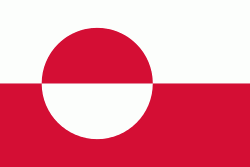Nipisat Island (Nipisat)
Nipisat Island (Kalaallisut: "Lumpfish", referring to the island's shape) is a small, uninhabited island in the Qeqqata municipality in central-western Greenland.
Nipisat Island has situated 15 km south of Sisimiut, on the shores of Davis Strait. It belongs to the group of small islands and skerries located at the mouth of Ikertooq Fjord, immediately to the west of Sarfannguit Island. Dwarf scrub heath, dwarf birch, Arctic willow, well-drained lichens, and herb vegetation dominate the flora.
Nipisat Island has situated 15 km south of Sisimiut, on the shores of Davis Strait. It belongs to the group of small islands and skerries located at the mouth of Ikertooq Fjord, immediately to the west of Sarfannguit Island. Dwarf scrub heath, dwarf birch, Arctic willow, well-drained lichens, and herb vegetation dominate the flora.
Map - Nipisat Island (Nipisat)
Map
Country - Greenland
 |
 |
Though a part of the continent of North America, Greenland has been politically and culturally associated with Europe (specifically Norway and Denmark, the colonial powers) for more than a millennium, beginning in 986. Greenland has been inhabited at intervals over at least the last 4,500 years by Arctic peoples whose forebears migrated there from what is now Canada. Norsemen settled the uninhabited southern part of Greenland beginning in the 10th century, having previously settled Iceland. Inuit arrived in the 13th century. Though under continuous influence of Norway and Norwegians, Greenland was not formally under the Norwegian crown until 1261. The Norse colonies disappeared in the late 15th century, after Norway was hit by the Black Death and entered a severe decline.
Currency / Language
| ISO | Currency | Symbol | Significant figures |
|---|---|---|---|
| DKK | Danish krone | kr | 2 |
| ISO | Language |
|---|---|
| DA | Danish language |
| EN | English language |
| KL | Greenlandic language |















